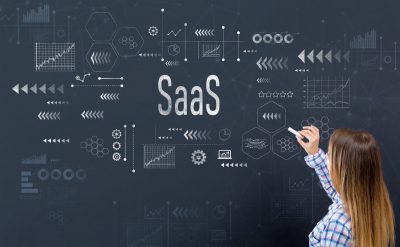Software-as-a-Service – also known as cloud-based software, is mainstream these days. From a retail shop to large scale corporations, the cloud-based software is the default deployment method in 2020 for almost every type of business setup in the world.
Sixty years ago, only a few businesses could afford to buy and maintain computers and servers. At the time, they would connect their monitors to a centralized server, which would give the services they need. To operate the SaaS-based technology, all that the user had to do was connect to the internet, open the web browser, and then type the software application’s URL.
After logging in, one has complete access to all the features such as elastic infrastructure, high availability, subscription-based billing, and data security for any stored data.
“By 2022, the SaaS market is expected to reach the USD 164.29 billion,” according to Transparency Market Research.
Why is the world shifting to SaaS?
It is accessible
One strong advantage of any SaaS application is the ability to run on an internet browser. So, the kind of operating systems such as Windows, Mac, or Linux used to access it does not really matter. With SaaS, you have full access to the features of the software whenever you want it. It allows business owners and other individuals to collaborate through the software easily. With just an internet connection, they can commence work.
It is up to date
Users do not have to worry about updating or serving the software as SaaS providers are the ones already doing it. Several software companies would have achieved this by releasing a new software version on a CD. With this feature, everyone will get updates on time.
It is affordable
There should be a constant lookout to avoid hidden costs before starting a SaaS subscription. This is how you save money by never having to pay the fees for installation or fixing the bugs. Therefore, you can easily switch to affordable SaaS solutions, which have the right kind of features and package you would want to sign up for.
It is employee-centric
If you know about cloud computing, it is entirely based on SaaS. It offers better communication, training, and project management in a typical business. The management of projects has become easy for project managers. Also, they can easily communicate effectively with both local and remote employees. By making the work environment hassle-free and reducing the process stages, it allows companies to look beyond the normal attributes and discover newer ones for further development.
But all these features can be enjoyed when you choose the right SaaS company for your organization. That means there are risks involved if you go for the wrong company such as pricing, downtime, solvency, and security.
To ensure that you pick the right SaaS company, consider these best practices for selection.
- Find out what will happen when you are no longer the customer of a SaaS company, is it possible to extract the data easily?
- Examine the customer support of the company when you become a paid customer.
- For the downtime, create a well-designed backup plan.
- Understand and find out how the company will deal with the data vulnerabilities or when there are data breaches.
- Make a note of prices; learn which kind of service and feature is attracting higher or exorbitant prices.
Now that you know what things to consider before choosing the right SaaS company, pick the right SaaS applications out of all that are available.
Types of SaaS companies
SaaS companies can handle just about every type of business function. Some of the widely used and popular types of SaaS applications are:
Enterprise Resource Planning (ERP) – This is a system for many SaaS applications that are most suited for big organizations as they keep track of more number of employees, allocated projects, streamline operations, and integrate all processes.
Customer Resource Management (CRM) – These applications allow SaaS customers to manage customer information and track sales through pipeline.
Project management – The software for project management can help collaborators in communicating messages and handling task allocation and similar things.
Human resources – SaaS companies can offer tools to track employee hours, manage payrolls, look through the hiring process, and schedule the tasks.
Ecommerce and web hosting – It refers to remote servers that can handle everything a business needs in its online presence.
Data management – The products of SaaS can help in doing the essential data management tasks such as analyzing, storing, and securing the company’s data.
Accounting and invoicing – Several SaaS companies emphasize billing, invoicing, financial tracking, and reporting services.
You and I can conclude that people are adopting the SaaS model at a faster pace than before. SaaS providers are layering on products, integrating big data, analytics, and artificial intelligence (AI). Companies that have made the switch or making the switch have realized that the model offers a competitive advantage because of its ability to speed their innovation cycle.
The shift to SaaS is the bright and right trend for the technology sector, and people will only see sustainable growth in the next decade. Find more such content and information in our latest whitepapers on Technology.













